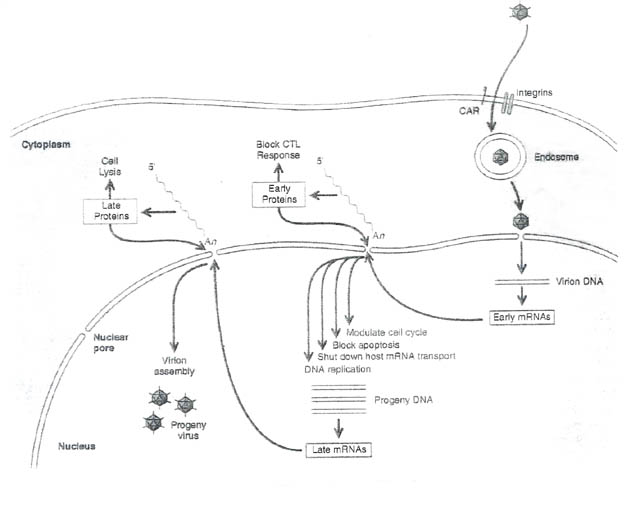
Like all successful human viruses, adenoviruses have evolved ways to evade the host immune system and promote their own replication. In order to perpetuate itself, the virus must remain hidden from the immune system until it has completed its replication in host cells. Accordingly, adenoviruses have three principle means of avoiding the host immune system. These include stopping the action of interferons, preventing cellular apoptosis, and trapping the host major histocompatibility complex, MHC.
The viral-associated RNA has the ability to interfere with the action of interferons in the host. Normally, interferons play a critical role in fighting against viral infections. The actions of interferons include stopping viral replication and enhancing the response from macrophages and natural killer cells. Thus, the inhibition of interferon is very beneficial to the survival of the virus.
The E1b protein of adenoviruses has the ability to stop apoptosis. The function of this protein is important to action of the virus. If apoptosis were allowed, then a cell could "commit suicide" for the benefit of other cells and spare the host a viral infection. By preventing apoptosis, the virus increases its likelihood of spreading.
Host MHC proteins are an important component of the human immune response because it is the cell's way of signaling distress to the immune system. By retaining the host MHC in the endoplasmic reticulum, viruses prevent infected cells from displaying viral peptides the immune system and preserve themselves.
After viral replication is complete, the late genes of adenoviruses lyse the cell and release its progeny virus throughout the immune system by the inhibition of host macromolecular synthesis and transport of mRNA. These actions kill the cell and allow the virus to be disseminated throughout the host.